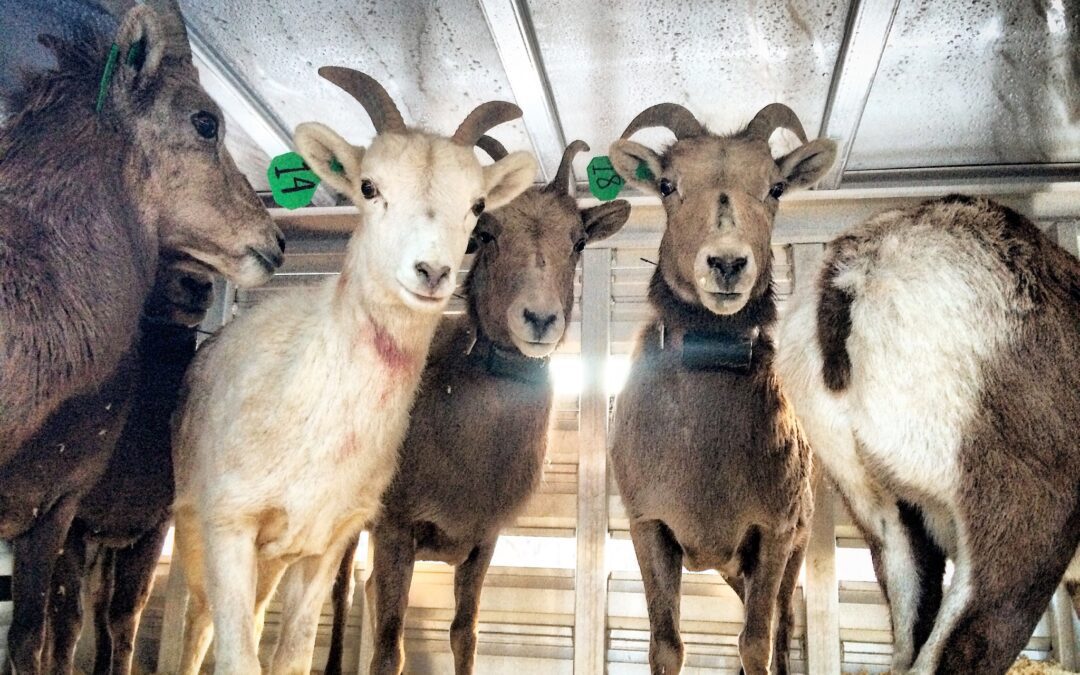At Utah Wild Sheep Foundation, we have several conservation efforts that support our mission to put and keep sheep on Utah’s mountains. One of these is sheep nurseries. A bighorn sheep nursery helps to breed and nurture young sheep in an environment specifically designed to help prevent disease exposure, reduce predation, and provide ample resources such as food and water to ensure healthy development. Once grown, these sheep will be transplanted into carefully-chosen herds to increase population as well as genetic biodiversity.
Understanding the Role of Bighorn Sheep Nurseries in Conservation
Bighorn sheep nurseries are a critical part of the campaign to put and keep sheep on Utah’s mountains. These nurseries help to produce healthy young sheep that can then be transplanted to augment existing herds or to start new herds in the area.
What is a Bighorn Sheep Nursery?
A bighorn sheep nursery is an area of land with the specific purpose of providing a safe, effective breeding ground for bighorn sheep. The nursery will provide ample food and water sources as well as being fenced to reduce the threat of disease and predation while preventing the sheep from wandering off. The sheep in these nurseries will eventually be placed in existing herds to augment population numbers or will be used to start new herds.
Why are Bighorn Sheep Nurseries Important?
There are several reasons bighorn sheep conservation groups like the Utah Wild Sheep Foundation include bighorn sheep nurseries as part of their conservation efforts. These include:
1. Protection from Disease & Predators
Some of the major threats to young lambs include disease and predators. In bighorn sheep nurseries, exposure to disease is mitigated and the thread of predators is decreased with surveillance and controls. This ensures lambs survive their younger, more vulnerable developmental periods so they may more effectively be placed in active herds.
2. Ample Food & Water Sources
Nurseries are strategically located to provide ewes and their young with easy access to lush vegetation and clean water sources. This ensures that the lambs receive the nutrition they need to grow and thrive during their early days.
3. Social Learning
Bighorn sheep are known for their complex social structure. Nurseries provide a conducive environment for young lambs to learn crucial behaviors and social skills from their mothers and other ewes in the group. These skills are essential for their survival and integration into larger bighorn sheep herds.
4. Temperature Regulation
Bighorn sheep nurseries are often situated at lower elevations, where the climate is milder compared to the higher mountain ranges where bighorns typically roam. This choice of location helps protect the lambs from harsh winter weather, reducing the risk of weather-related challenges.
5. Disease Management
Bighorn sheep populations are vulnerable to diseases such as respiratory infections that can have devastating effects on their populations. By isolating nurseries in areas less frequented by domestic livestock, conservationists aim to reduce the risk of disease transmission to bighorn sheep. These sheep will undergo a quarantine period before being introduced to existing sheep populations to reduce the risk of disease transmittance during herd introductions.
6. Conservation and Population Growth
Bighorn sheep populations have faced significant challenges over the years, including habitat loss, disease, and competition with domestic livestock. Nurseries play a crucial role in sustaining and increasing bighorn sheep populations by providing a secure environment for lamb survival, thus contributing to the overall health of the species. The sheep that are birthed and raised in these nurseries will be added to existing herds to augment their population and genetic biodiversity or will be used to create new herds.
7. Research Opportunities
Bighorn sheep nurseries also offer valuable opportunities for wildlife researchers and conservationists to study these animals in their natural habitat. By understanding the behavior and habitat preferences of bighorn sheep during the lambing season, scientists can develop effective conservation strategies and management plans.
Join Our Conservation Efforts
One of the easiest ways to support bighorn sheep conservation is to donate to or become a member of conservation groups such as the Utah Wild Sheep Foundation (Utah WSF). Learn more about becoming a member or make a donation today.

